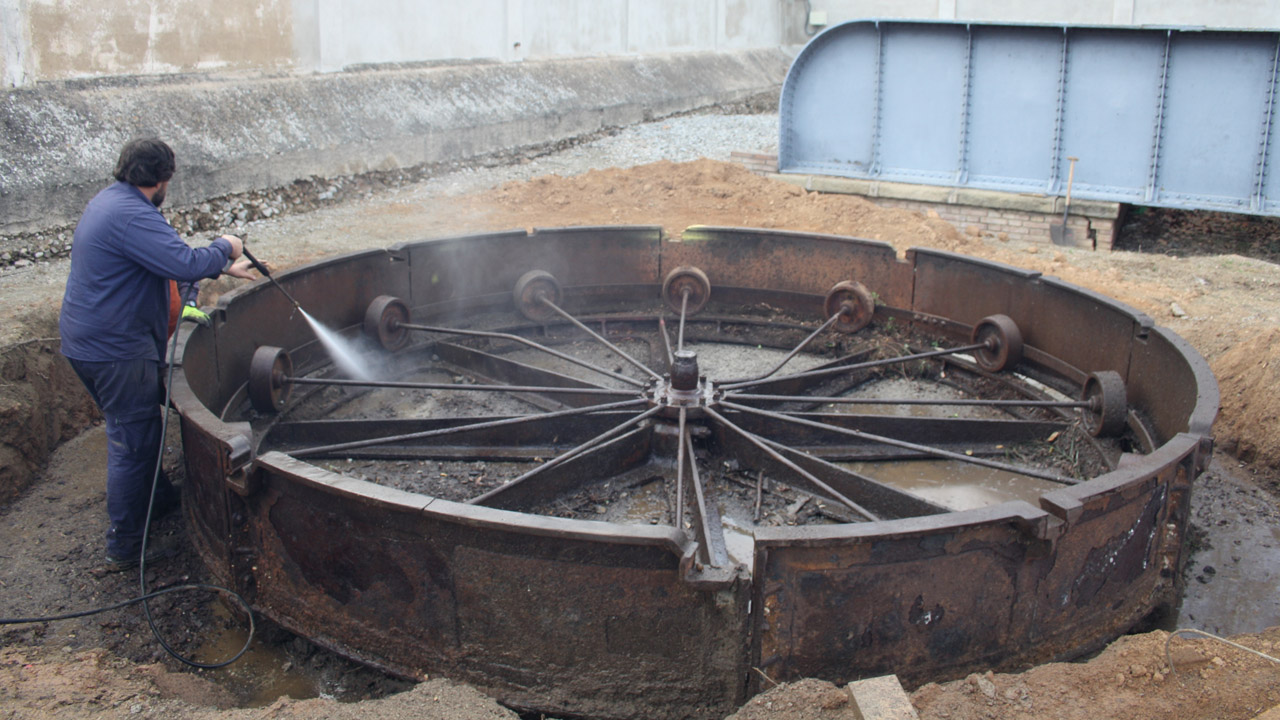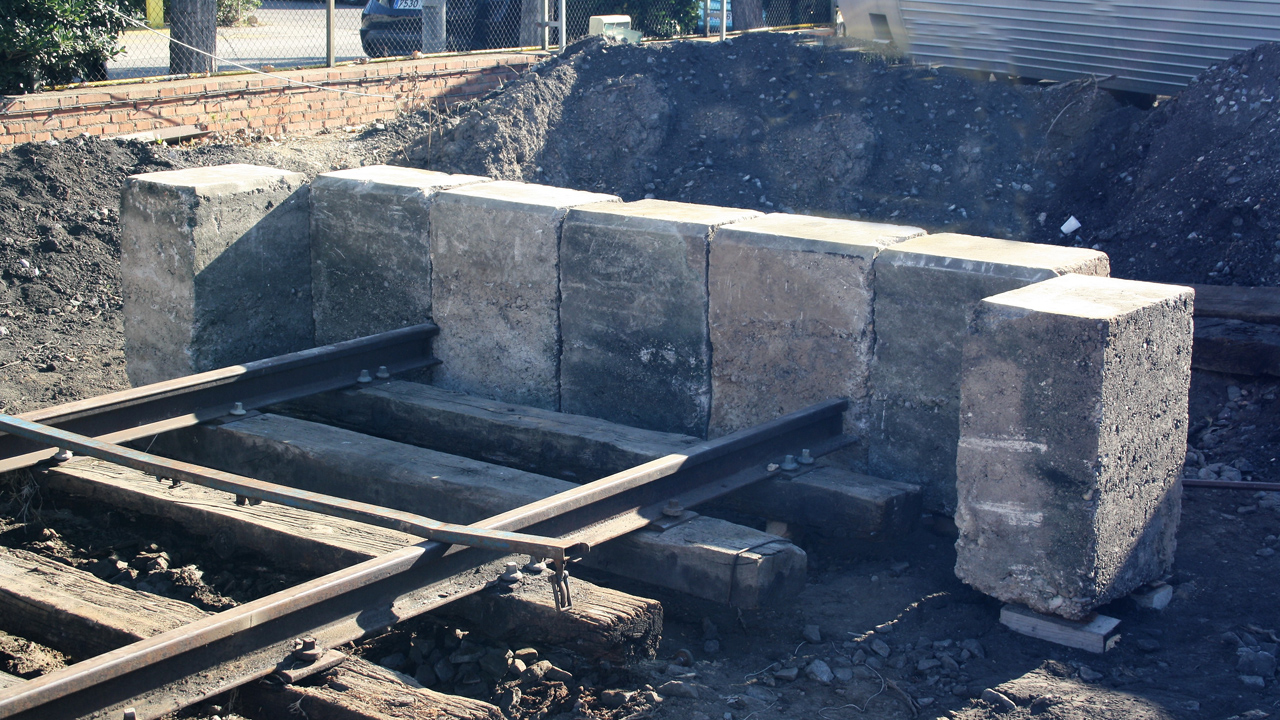
Image of the Sitges Autodrome, 19th century

"Puente de Señales" at the Barcelona´s Francia Station, 30s

Contour track construction, 2017

Installing Vilanova´s turntable, 2017

"Puente de Señales" halt construction, 2017

Derail buffer installation, 2018
21 - "Puente de Señales" (Signals Bridge) train stop and contour track
At the back of the end of the exhibition tracks, there is
a train stop called the “Puente de Señales” (Signals
Bridge). Its platform features material from the historic
1923 Autódromo de Terramar train stop in Sitges, which no
longer exists. The train stop is located at one of the ends
of the 170-metre contour track, which was built between 2017
and 2018 on the outer perimeter of the tracks of Vilanova i
la Geltrú’s former Steam Depot, in order to enable light
vehicles to take passengers around the Museum.
This is also the location of the “Puente de Señales”
(Signals Bridge), which was originally part of the Francia
Station. It now marks the boundary between the Museum and
Renfe’s commuter-train maintenance workshop. From 1929 to
1989, it regulated outgoing traffic in Barcelona’s most
emblematic station.
The itinerary begins at a 4-metre-diametre turntable, which
connects with track 29 of the Rotonda’s fan of sidings,
continues behind the locomotives, passes by Jose María
Subirach’s sculptural frieze, crosses the historic “Paso a
Nivel” (Level Crossing”) of Roda de Mar and ends at the
so-called “Puente de Pineda” (Pineda Bridge) train stop and
a 5-metre-long turntable from the Vilanova Station. The
contour track’ two turntables enable the vehicles running
along this section to be turned around, and also connect the
different areas so that the vehicles can be exchanged
between them.
The itinerary features five straight stretches and two bends
with a 50- and 80-metre radius, respectively. Running
alongside the new track is a pathway (called Paseo Entrevías)
protected by a metallic fence, which enables you to see the
back of the vehicles on display outside the Museum, as well
as the track’s different infrastructure elements and
vehicles.


